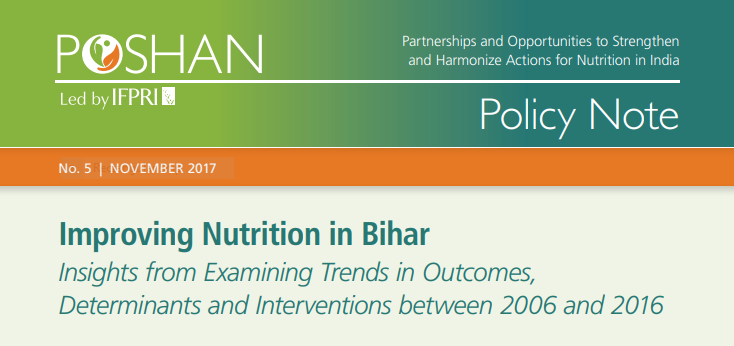Bihar is a landlocked state in eastern and northern India. It is split into 9 divisions and 38 districts. It is the nation’s third most populated state, and is home to 103 million people. With only 11.3 percent of its population living in cities, Bihar is one of India’s least urbanized states (Government of Bihar, 2017). Fifty-eight percent of Bihar’s population is below the age of 25, the highest proportion in the country. The state has a sex ratio of 916 females for 1000 males (Census of India, 2011).
The purpose of this Policy Note is to examine the trends in undernutrition in Bihar and to document trends and geographic variability in the major determinants of nutrition and the coverage of key nutrition and health interventions. In doing this analysis, we aim to highlight key areas for actions to improve nutrition in Bihar.



